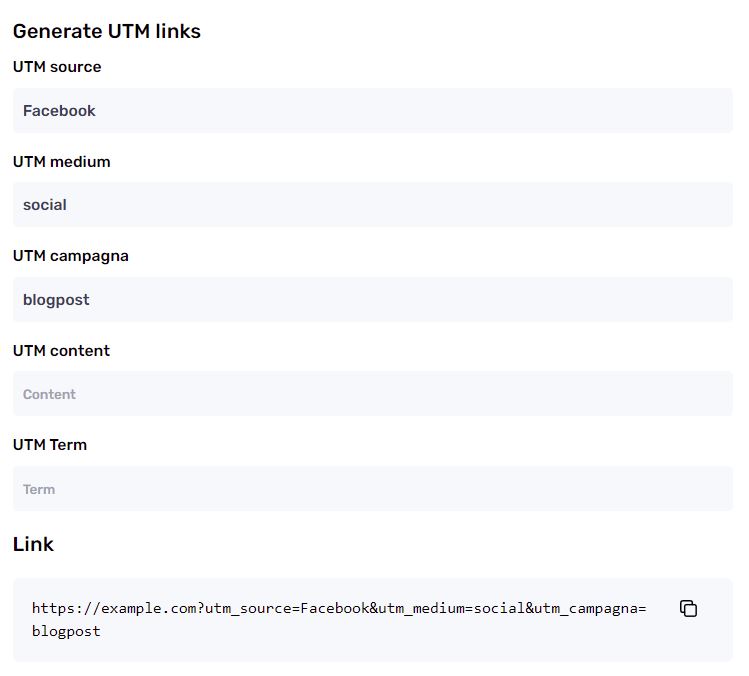Generate UTM Link for your campaign
UTMs (an acronym for "Urchin Tracking Module") are parameters that are added to a URL for the purpose of identifying the source of traffic that will then be transmitted to Vantevo Analytics.
UTM Links help you get detailed information about your campaigns and traffic. Proper use of UTMs in link coding will help you gather valuable data about your customers and their path through your site.
In this section you have the URL creation tool to help you put parameters into links.
What are UTM parameters?
A UTM parameter is a snippet of code that you add to the end of a URL to monitor the performance of campaigns and content. There are 5 URL parameters you can monitor: source, medium, campaign, term and content.
- Source (utm_source) is the source detail of the traffic coming to your website.
- Medium (utm_medium) indicates the marketing medium used to create the campaign, such as email, post, pop-up banner, video etc.
- Campaign (utm_campaign) is the name that identifies the marketing campaign you want to monitor.
- Content (utm_content) identifies what content sent the traffic. If, for example, within the same newsletter page you have multiple call-to-actions, by configuring this parameter you can figure out which link was clicked.
- Term (utm_term) useful for paid ads, it indicates the keyword that led the user to click on the ad.
Once the desired parameters are entered, the custom link is ready. To copy it, simply click on the "copy" icon to the right of the link and use it in your marketing campaigns.
The dimensions you monitor via UTM codes are displayed in analytics reports to give you a clearer view of marketing performance. Specifically, the Referrals metric shows which sources the traffic to your website comes from.
For more information on metrics, see the Referrals page.

Why UTM parameters are important
Without UTM campaign data, it is easy to attribute ROI to the wrong channel or campaign. You may end up with data that appears to be correct but is actually misleading. Incorrect marketing data leads to incorrect marketing decisions.